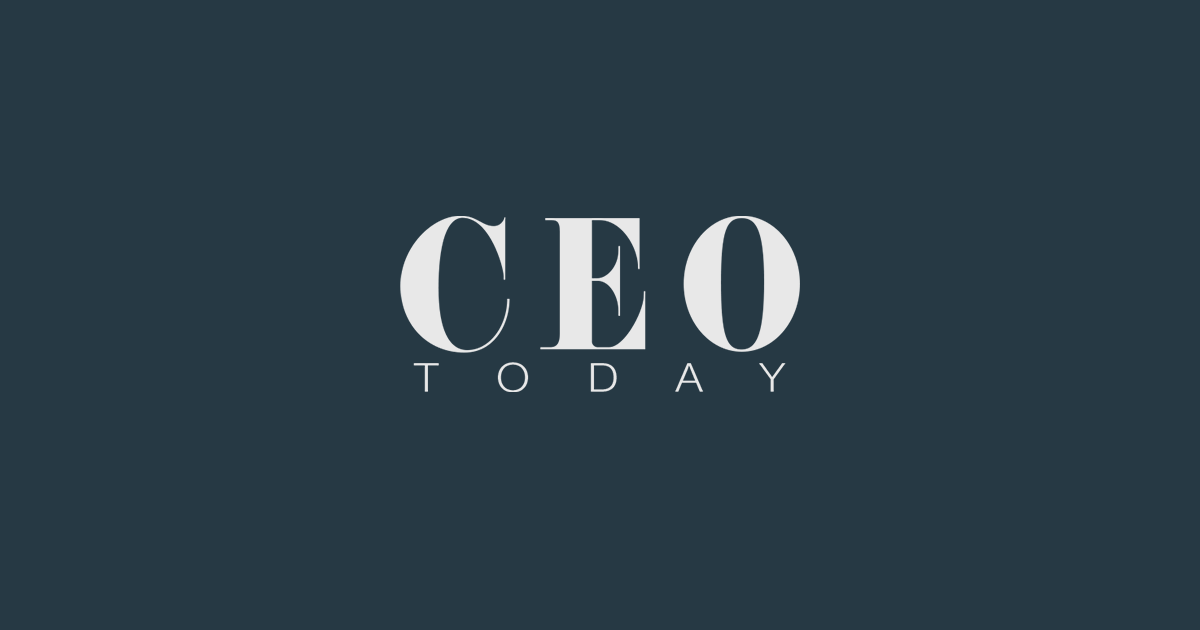The CEO’s Master Blueprint for Corporate Growth, Strategy, and Innovation in 2025
In 2025, corporate growth has evolved into something far more complex than a measure of profit or expansion. It’s now defined by an organization’s capacity to innovate intelligently, build adaptable systems, and lead with foresight. The role of the CEO has expanded from strategic oversight to visionary orchestration—bridging technology, culture, and market insight into a cohesive engine of sustainable growth.
This blueprint explores what innovation will look like in 2025, the eight priorities that matter most to CEOs, the corporate strategies driving business growth, and the industries poised to dominate the next era of opportunity.
What Innovation Will Be in 2025
Innovation in 2025 is no longer about singular inventions or one-off breakthroughs—it’s about connected intelligence. The defining characteristic of modern innovation is integration: linking people, systems, and data in ways that create exponential value.
Artificial Intelligence (AI) has moved from experimentation to enterprise-wide application. Companies are deploying AI not just to automate repetitive work, but to enhance decision-making, forecast outcomes, and personalize customer experiences at scale. For example, predictive algorithms now allow CEOs to anticipate supply chain disruptions before they occur, and AI-driven analytics identify new revenue streams long before competitors do.
In logistics and e-commerce, innovation means precision, speed, and sustainability. Robotics have redefined warehouse operations, and real-time data now drives fulfillment optimization. The emergence of digital twins—virtual replicas of supply chains, facilities, or even customer ecosystems—allows leaders to simulate outcomes before making multimillion-dollar decisions.
Sustainability has become innovation’s moral and strategic compass. Businesses are no longer simply reacting to ESG expectations; they are embedding sustainability into their business models. From circular economy practices to carbon-tracking blockchain systems, enterprises are innovating not only to grow but to preserve resources and build resilience.
Another major shift in 2025 is open innovation. The smartest companies aren’t innovating in isolation—they’re forming partnerships with startups, universities, and even competitors to co-create solutions faster. Innovation ecosystems are replacing R&D departments, breaking the boundaries of traditional corporate structures and accelerating time-to-market for breakthrough ideas.
What Matters Most: Eight Priorities for CEOs in 2025
The CEO’s role in 2025 has never been more multifaceted. Leaders are expected to be technologists, strategists, and humanists all at once. Based on current global business dynamics, eight priorities define what matters most to CEOs in 2025.
1. Scaling AI and Automation
Artificial Intelligence is no longer optional—it’s foundational. CEOs must focus on scaling AI adoption beyond experimentation to full integration across departments. The competitive edge lies in automation that enhances human decision-making, not replaces it.
2. Building Robust Data Ecosystems
Data is the new infrastructure. CEOs must champion the unification of enterprise data systems, breaking down silos to create a single source of truth that drives real-time decisions and predictive insights.
3. Operational Efficiency and Cost Optimization
Efficiency has become a growth strategy in itself. As global inflation, energy costs, and supply challenges persist, CEOs are using automation, analytics, and process engineering to create leaner, more agile enterprises.
4. Talent and Leadership Transformation
Human capital remains a decisive growth factor. The CEOs of 2025 are focusing on leadership pipelines, digital skills development, and flexible work cultures that foster creativity and resilience.
5. ESG and Purpose-Driven Growth
Sustainability is not just compliance—it’s competitive advantage. Enterprises that align purpose with profit outperform peers in innovation, retention, and brand trust. CEOs are embedding ESG metrics into strategic planning, ensuring growth benefits both stakeholders and society.
6. Customer-Centric Growth
In 2025, customers expect personalization, speed, and transparency. CEOs must lead organizations that understand customers at an individual level, using data and AI to anticipate needs and tailor experiences.
7. Risk Management and Resilience
The post-pandemic world has taught CEOs to prepare for the unpredictable. Building resilient supply chains, diverse sourcing strategies, and robust cybersecurity frameworks is now non-negotiable.
8. Organizational Agility and Culture of Innovation
The most adaptive companies thrive. CEOs are flattening hierarchies, empowering cross-functional teams, and fostering cultures where experimentation is celebrated, and failure fuels learning.
These eight priorities represent the new architecture of leadership—where technology, humanity, and strategy merge to sustain growth amid uncertainty.
What Are the Four Types of Corporate Strategy for Business Growth
Growth in 2025 requires CEOs to think beyond linear expansion. The most successful organizations blend multiple types of corporate strategy to create diversified, resilient growth models.
1. Organic Growth
Organic growth focuses on internal innovation—improving existing products, entering adjacent markets, and deepening customer relationships. It’s sustainable and often less risky, emphasizing long-term value creation over short-term gains. In 2025, digital transformation is the foundation of organic growth, as businesses use automation and analytics to scale efficiently.
2. Inorganic Growth (Mergers & Acquisitions)
M&A is evolving from sheer scale acquisition to capability acquisition. Rather than buying market share, CEOs are acquiring innovation—AI startups, logistics tech, and niche digital agencies—to enhance agility and fill technological gaps. Integration strategy has become more sophisticated, emphasizing culture, brand synergy, and shared digital infrastructure.
3. Innovation-Led Growth
This strategy focuses on reinventing value creation. Companies are transforming from product sellers into platform providers or service ecosystems. For example, car manufacturers are transitioning into mobility solution providers, and logistics companies are evolving into data-driven network platforms.
4. Operational Excellence
Operational excellence underpins every other growth strategy. Lean operations, automation, and efficiency analytics drive cost reduction while freeing up capital for innovation. CEOs are investing in technologies such as robotic process automation (RPA), ERP modernization, and intelligent forecasting to ensure every operational layer supports strategic growth.
The most future-ready CEOs integrate all four strategies—innovating from within, acquiring strategically, disrupting deliberately, and executing with precision.
What Business Will Be Booming in 2025
Certain industries are positioned to experience exponential growth as technology, sustainability, and consumer expectations converge. The defining characteristic of 2025’s booming sectors is digital enablement—businesses that can combine technology, data, and agility are leading the charge.
Artificial Intelligence and Automation Services are thriving. Every sector, from manufacturing to marketing, is integrating AI to improve forecasting, streamline workflows, and enhance personalization. Startups focused on AI infrastructure, generative AI ethics, and data governance are seeing unprecedented demand.
Digital Infrastructure and Cloud Services continue to expand rapidly. The shift toward hybrid work and global digital operations requires scalable, secure cloud ecosystems. Edge computing is emerging as the next frontier, enabling faster data processing at the source—a game-changer for logistics, healthcare, and manufacturing.
E-Commerce Fulfillment and Logistics Innovation are booming as customers demand faster, more transparent delivery experiences. Automation, robotics, and predictive analytics have revolutionized how businesses manage inventory, warehouse operations, and supply chains.
Sustainability and Clean Tech are no longer niche—they’re central to global growth. From renewable energy production to green logistics, sustainability-driven enterprises are capitalizing on both consumer demand and regulatory incentives.
Cybersecurity and Risk Management are critical growth sectors in an age of interconnected systems. As AI and automation expand, so do vulnerabilities. Companies specializing in threat detection, zero-trust architecture, and compliance automation are growing rapidly.
Health Tech and Wellness Innovation are also on the rise. The convergence of data analytics, wearable tech, and personalized healthcare is transforming how consumers engage with wellbeing.
Meanwhile, Fintech and Embedded Finance are redefining how businesses and consumers transact. Payments, lending, and credit assessment are now integrated directly into platforms, creating frictionless experiences and new profit channels.
Every booming business of 2025 shares a common DNA: digital fluency, operational intelligence, and the agility to adapt in real time.
What Corporate Growth Looks Like in 2025
Corporate growth in 2025 is no longer defined by linear expansion—it’s adaptive, intelligent, and multidimensional. It combines data-driven decision-making, operational agility, and human-centered leadership to create organizations that evolve continuously.
At its foundation, modern growth is powered by information intelligence. CEOs are leveraging real-time analytics to make rapid, evidence-based decisions. Predictive analytics allows companies to anticipate challenges before they arise, transforming leadership from reactive to proactive.
Inside these enterprises, agility is visible everywhere. Teams are smaller, faster, and cross-functional. Decision-making authority is distributed, empowering employees at every level to innovate and execute. Traditional hierarchies are giving way to networked collaboration models that emphasize speed, flexibility, and accountability.
Externally, growth is customer-defined. Enterprises are mapping entire customer ecosystems—tracking sentiment, predicting intent, and creating hyper-personalized journeys that build loyalty and lifetime value. Marketing and SEO have evolved into intelligent growth systems, powered by automation and predictive optimization.
Sustainability and purpose form the moral backbone of growth. Consumers and investors alike demand transparency, inclusivity, and social responsibility. CEOs understand that long-term success depends on aligning profits with principles.
Corporate growth in 2025, then, looks like balance—the balance between human creativity and artificial intelligence, between efficiency and experimentation, between purpose and profit.
Conclusion: The Era of Strategic Intelligence
The next generation of corporate success will belong to the organizations that can think and act intelligently at every level. The CEO’s role in 2025 is not merely to lead but to orchestrate—aligning data, systems, and people toward a shared vision of innovation and impact.
Growth now depends on mastery of both logic and imagination: leveraging AI and analytics to scale operations, while nurturing creativity and culture to sustain long-term value.
The true blueprint for 2025 is clear: lead with intelligence, innovate with purpose, and grow with integrity. The CEOs who embrace this vision won’t just navigate the future—they’ll define it.














